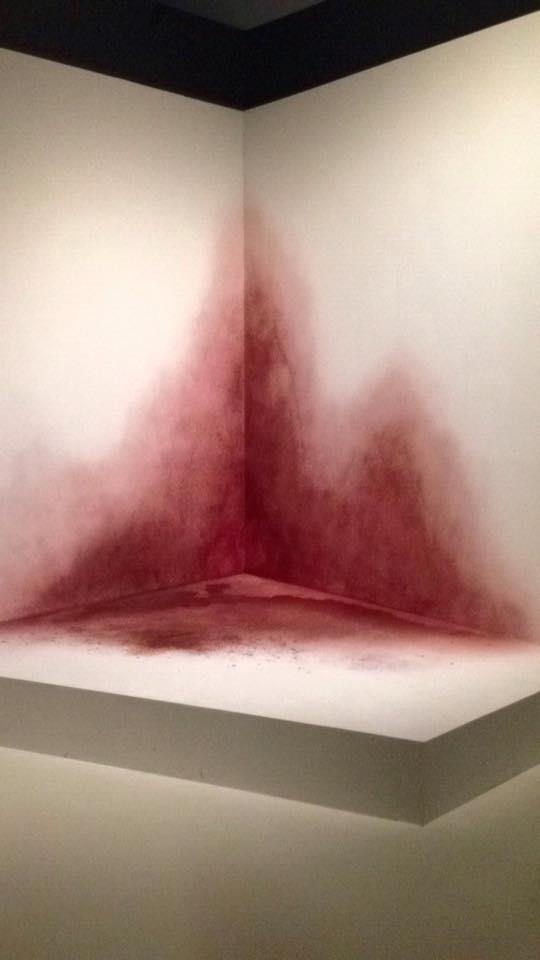Caput Mortuum
instalacja
„To wolno stojący fragment architektury, który można nazwać jednocześnie obiektem i malarstwem. Powstał specjalnie na tę wystawę. Istotą pracy jest użyty do jej wykonania barwnik – Caput Mortuum. Mural został namalowany przy użyciu tylko tego jednego pigmentu, którego barwa zmienia się wraz z natężeniem. Bogata symbolika substancji Caput Mortuum dotyka wielu wątków związanych z życiem i śmiercią.”
Praca przygotowana na wystawę „Krew łączy i dzieli”
13.10.2017 – 29.01.2018
Muzeum Historii Żydów Polskich POLIN
Kuratorka wystawy: dr Małgorzata Stolarska-Fronia
Dokumentacja video: Facebook MHŻP Polin
____________
Caput Mortuum
installation art
„Dorota Buczkowska’s work also relates to the theme of transformation, ritual and sacrifice. It is displayed in the exhibition area dealing with kashrut. The artist has created a saturated, reddish stain which seems to emerge from the ground and, according to her concept, “permeates from the deeper layers of reality”.
„I’m interested in colour and its relationship with the viewer”, an interview with Dorota Buczkowska
- Your work in the exhibition Blood: Uniting and Dividing has quite an unusual form…
It is a freestanding piece of architecture which can be called both an object and a painting. It was created especially for this exhibition. The essence of the work is the dye which was used in its creation—Caput Mortuum, cardinal red. The mural was painted using only this one pigment, the colour of which changes with its intensity. The rich symbolic substance of Caput Mortuum touches on many themes connected with life and death.
- Has this theme already appeared in any of your work?
The subject of life circulation, the internal flow control systems, frequently appeared in my projects 10-15 years ago. Now, I’m extremely interested in colour and its relationship with the viewer. An abstract mural, whose essence is colour, is less literal. I believe that this allows for a more individual perception. I don’t like art to be unambiguous. In my opinion, the role of art is to open up a space for independent thought, not to provide ready-made answers—that is also the nature of my project.
- So, in that case, did you feel at all inhibited by the limits of the exhibition and the expectations of the curators?
This was a very interesting experience – working with an institution which approached the project from various perspectives – mainly historical and educational and inviting contemporary art to join into the dialogue. The exhibition has an educational dimension, so it was important to stick to the subject matter. However, the creators of the exhibition, in researching the subject through the prism of various disciplines, have created a most inspirational common area. So that our work together very much took on the character of a dialogue.
